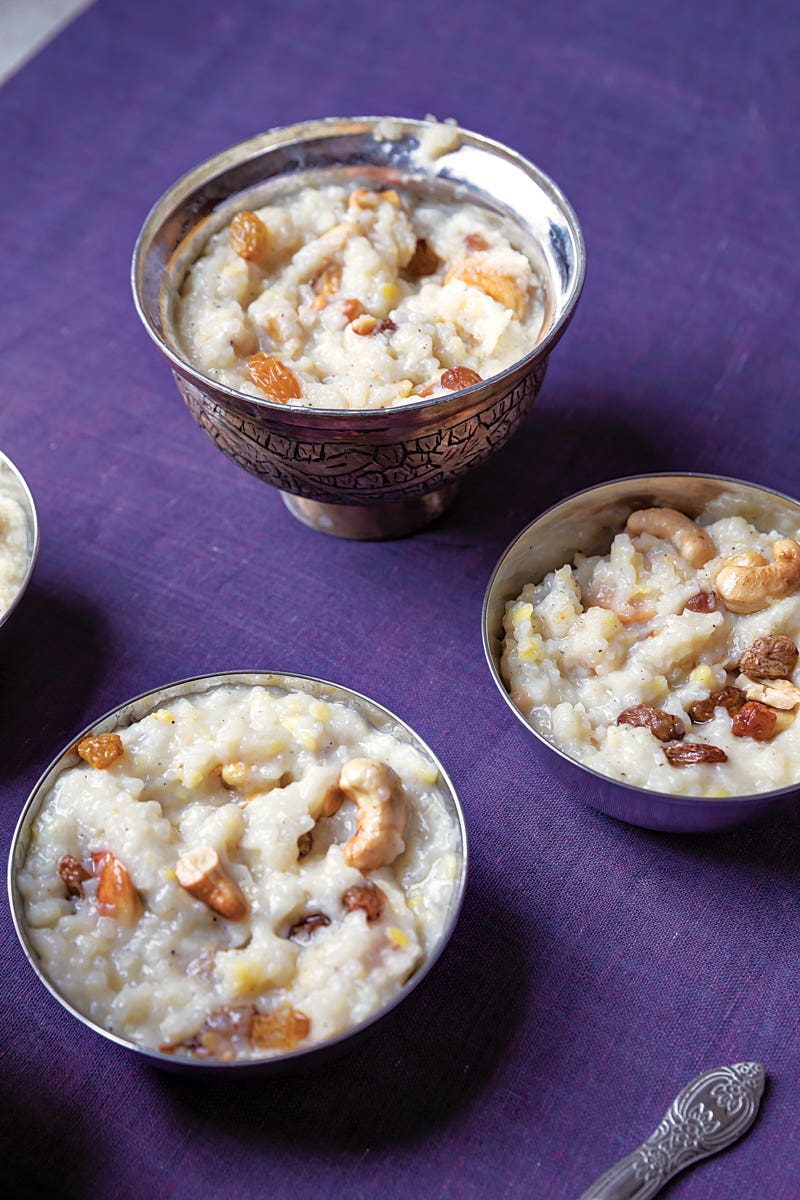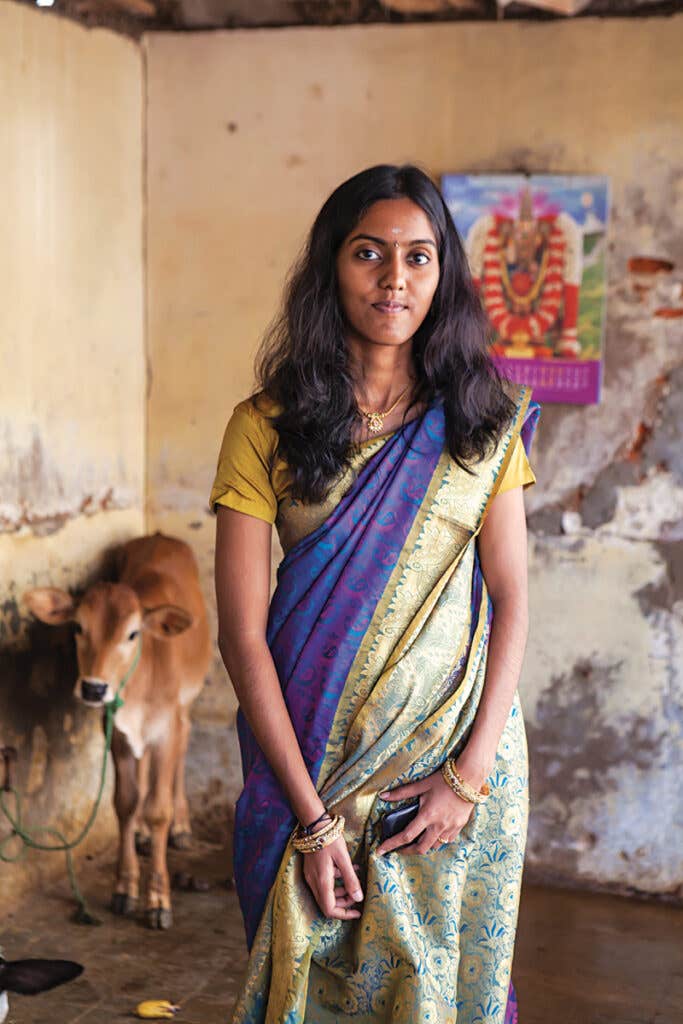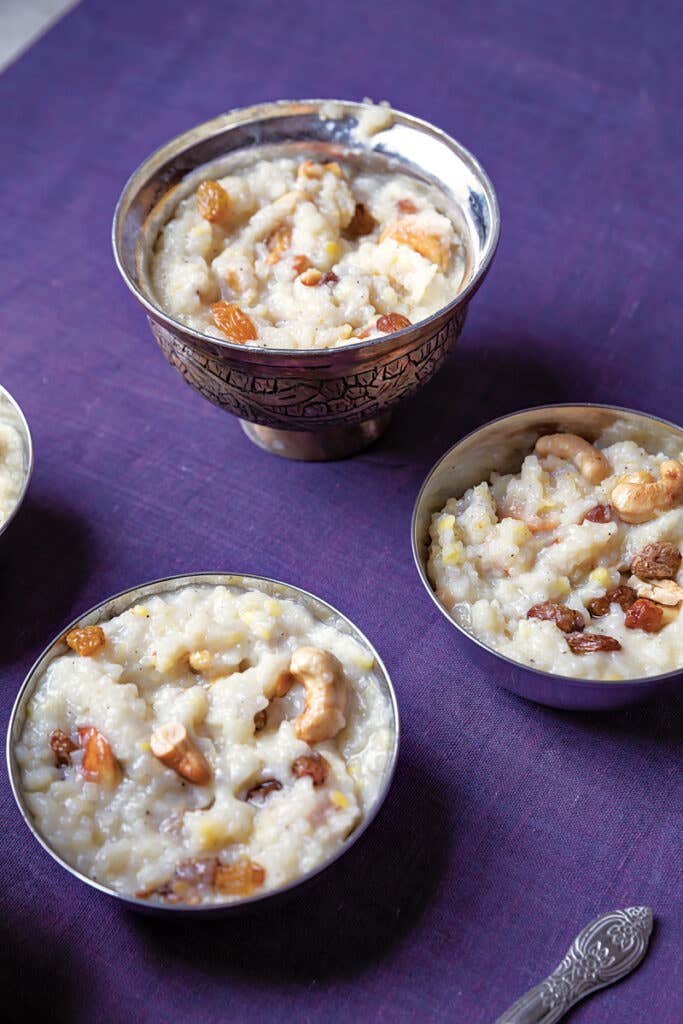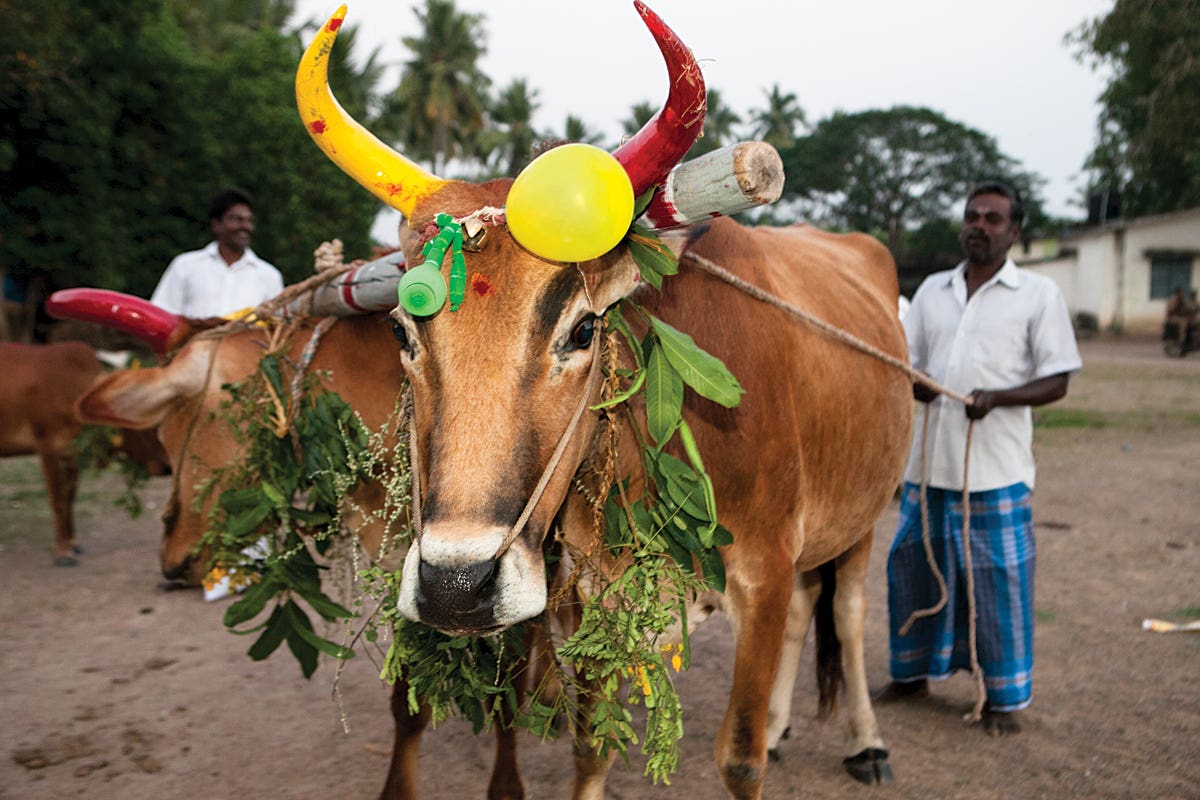
Pongal: The Year’s Sweetest Taste
Against the press of modernity, one village tradition withstands time

So much has changed in Molasur. I used to drive past this isolated agricultural hamlet in the South Indian state of Tamil Nadu on my way home to the nearby town of Pondicherry. Twenty years ago, the village was a jumble of thatch huts and farms. But in the wake of India’s economic reforms, those farms have been replaced by concrete buildings and gated communities. Bicycles and bullock carts have given way to motorcycles. Molasur is slowly becoming a town.
Yet for all the change, the four-day South Indian harvest festival known as Pongal is still observed each January. For me, the highlight takes place on the second day: a vegetarian feast like no other, featuring the best and most bountiful crops this town has to offer—from earthy sweet potatoes to meaty coconuts, nutty broad beans to creamy bananas. As landlord families throughout South India have done for centuries, the Reddiars, former feudal masters over 85 villages in the area, host the meal, which is meant to honor the land’s abundance, the weather gods, and cattle. Each year, for generations, the family has decorated cows in flowers and painted horns and opened the doors of their vast whitewashed home to feed the village’s approximatley 5,000 residents.
The start of Pongal is determined by the beginning of the sun's six-month journey northward, which Hindus consider auspicious. This year, the feast was held on January 14. I was invited by my friend R. Sathyaranayan, or Sathy, the youngest son in the Reddiar household. His family began their preparations at 7 am, just after dawn, gathering in the courtyard to watch a clay pot filled with milk and rice that would determine the coming year's fortune. They were relieved to see the pot boil evenly on all sides, a signal of prosperity and abundance for the year. Pongal, after all, means "to boil" in Tamil, and of the range of pongal dishes, this dish—sakkarai (or sweet) pongal—is reserved for its namesake festival.
Not far from the clay pot, Gopal, the family cook, worked with his helpers, slicing vegetables and cleaning lentils. Gopal is 80 years old but looks much younger. He heaved gunny sacks of rice; he lifted logs of wood and stoked the fires—Pongal feasts are cooked traditionally over wood, never gas.
At midday, we moved to the pooja room, or meditation room, where a ceremony was held amid incense smoke and ringing bells to honor the gods and the family’s ancestors. The ceremony over, we moved on to the serious business of the day, the feast itself. A score of family members and friends gathered in the living room for this meal made mostly with ingredients from Molasur’s fields. Outside, villagers milled around as we ate; they would be invited into the home to eat later.
Assisted by his helpers, Gopal, shirtless and glistening with sweat, spooned helpings of food from brass buckets onto banana leaves spread across the concrete floor. Many of these wholesome, simple dishes reminded me of food I had eaten throughout my childhood. There were five types of poriyals—sautéed vegetables including yams, broad beans, sweet potatoes, and bananas, all infused with the distinctive South Indian flavor of coriander and curry leaves. I was also impressed by Gopal’s variations on classic dishes. His pumpkin poriyal, for example, was heavily seasoned with grated coconut.

The best part of the meal is the special dish that shares its name and annual appearance with the festival itself: sakarai pongal. It is traditionally made with the season’s first rice and fresh milk, mixed with jaggery, raisins, and cashews, and then boiled until it is almost a paste. We didn’t wait to finish the rest of the dishes to eat this delicious dessert; we scooped up the sweet pongal with our hands between morsels of the main dishes.
After the meal, Sathy and I went for a walk to the end of the village and sat at the edge of his family’s fields, by an ancient temple, its granite façade blackened over the years. Sathy told me that Molasur’s traditional agricultural life had withered amid India’s new economy. The young were no longer interested in farming; they preferred to work in the cities, in technology, at call centers. “Soon we probably won’t even farm here anymore,” he said, running his hand across the horizon, the length of his fields.
A young boy from the village came running over. He asked Sathy when the feast would happen and Sathy told him it was being served at that very moment.
As the boy ran off to eat, Sathy said, “I’m happy I can still open my doors once a year and feed the people of this village.” He looked at the ground, his hands in his pockets. “At least we can still do this.”
See the recipe for Sakkarai Pongal (Tamil-Style Sweet Rice Pudding) »
See the recipe for Rasam (Spicy Tamarind Soup) »
Akash Kapur is the author of India Becoming_ (Penguin-Riverhead, 2012)_
Keep Reading
Continue to Next Story











